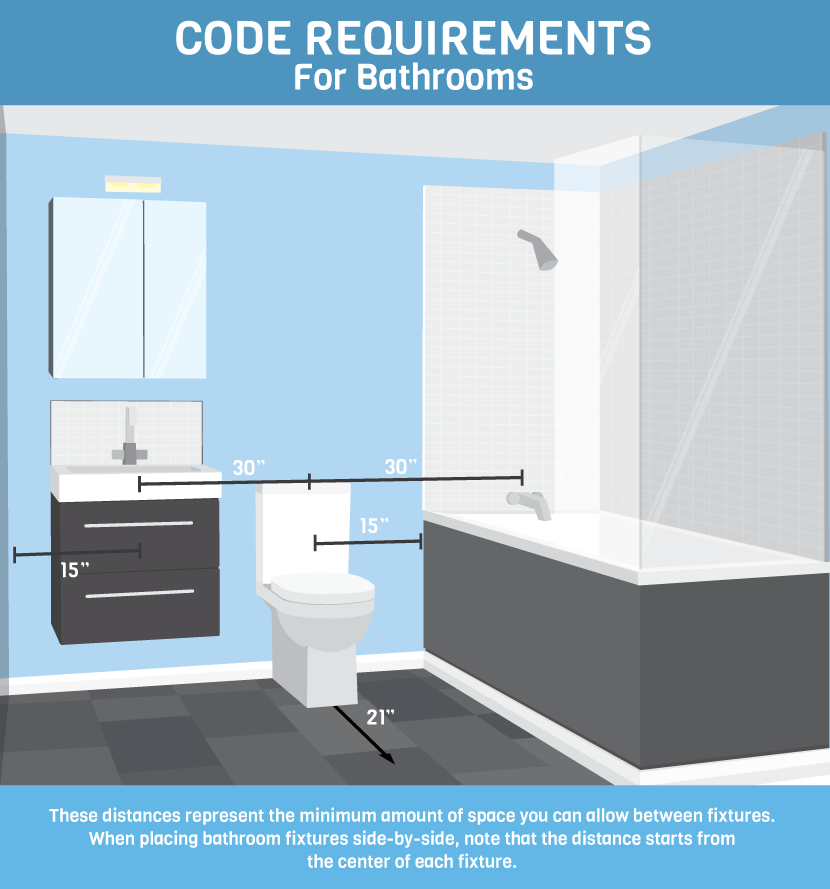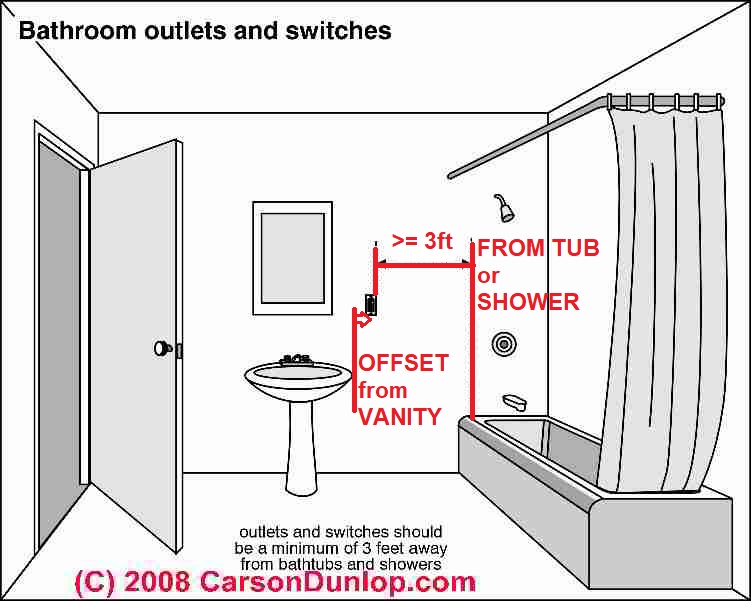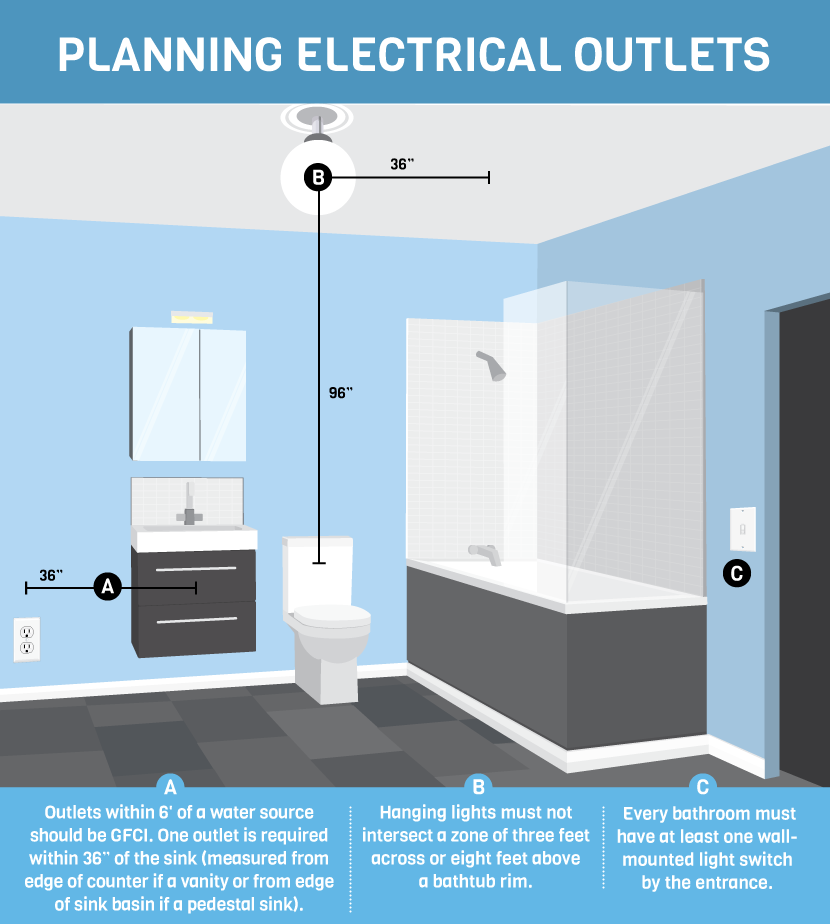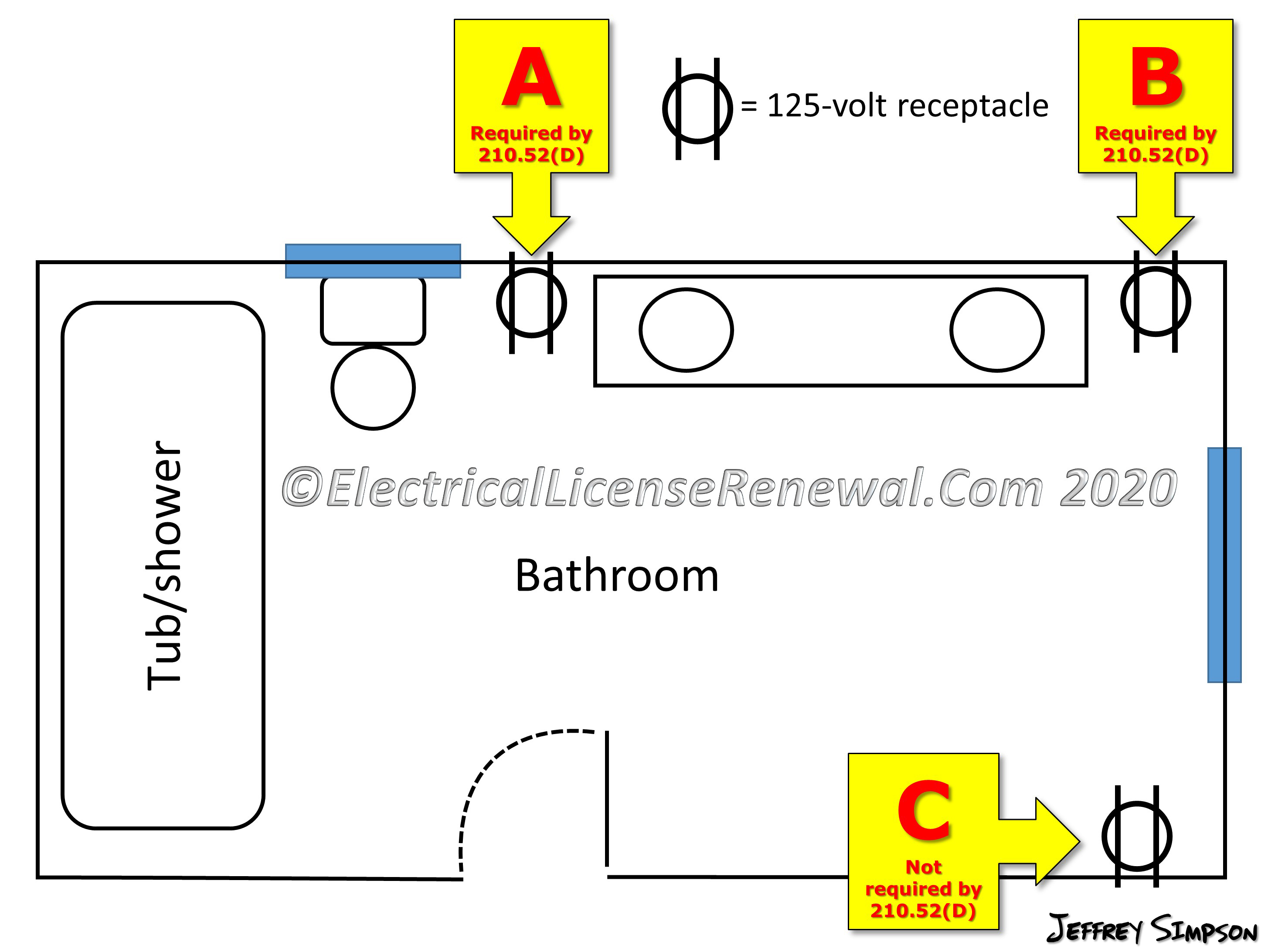The Importance of GFCI Outlets in Bathroom Safety
GFCI (Ground Fault Circuit Interrupter) outlets play a crucial role in ensuring the safety of electrical systems, particularly in high-moisture environments like bathrooms. These outlets are designed to quickly shut off power in the event of a ground fault, which occurs when electricity escapes the intended path and flows through unintended conductors, such as water or a person’s body. Here’s why GFCI outlets are indispensable for bathroom safety:
- Protection Against Electric Shock: One of the primary purposes of GFCI outlets is to protect against electric shock in wet areas like bathrooms. Since water is a good conductor of electricity, the risk of electrocution is higher in such environments. GFCI outlets continuously monitor the flow of electricity, instantly shutting off power if they detect even a slight imbalance, thereby preventing potentially life-threatening shocks.
- Prevention of Electrical Fires: In addition to safeguarding against electric shock, GFCI outlets also help prevent electrical fires. When an electrical fault occurs, such as a short circuit or damaged wiring, it can generate excessive heat that may ignite nearby combustible materials. By interrupting the flow of electricity at the first sign of a fault, GFCI outlets mitigate the risk of fire, protecting both property and lives.
- Compliance with Building Codes: Many building codes and regulations mandate the installation of GFCI outlets in areas prone to moisture, including bathrooms, kitchens, and outdoor spaces. Compliance with these codes is essential for ensuring the safety and legality of residential and commercial properties. Failure to install GFCI protection where required may result in fines, penalties, or even denial of insurance claims in the event of an accident.
- Enhanced Electrical Safety: GFCI outlets offer an additional layer of electrical safety beyond standard circuit breakers and fuses. Unlike traditional overcurrent protection devices, which primarily guard against short circuits and overloads, GFCI outlets provide targeted protection against ground faults, which are more common in wet environments. This proactive approach to safety helps reduce the risk of accidents and injuries associated with electrical hazards in bathrooms.
- Peace of Mind for Homeowners: For homeowners, the installation of GFCI outlets in bathrooms provides peace of mind knowing that their family and property are protected from electrical hazards. Whether it’s children playing with electrical appliances near the sink or accidental water splashes during showering, GFCI outlets offer reliable protection against the unexpected, allowing homeowners to feel confident in the safety of their living environment.
- Industry Standards and Recommendations: Various industry organizations, such as the National Electrical Code (NEC) and the Electrical Safety Foundation International (ESFI), recommend the widespread use of GFCI protection in residential and commercial settings. These organizations continually update their guidelines and standards to reflect the latest advancements in electrical safety technology, emphasizing the importance of GFCI outlets in preventing accidents and fatalities.

Building Codes and Regulations Regarding GFCI Outlets in Bathroom Areas
Building codes and regulations governing the installation of GFCI outlets in bathroom areas are established to prioritize safety and minimize the risk of electrical accidents. These codes outline specific requirements for GFCI protection in various locations within the bathroom, including near sinks, showers, bathtubs, and other wet areas. Understanding and complying with these regulations is essential for homeowners, contractors, and building inspectors alike. Here’s what you need to know about building codes and regulations regarding GFCI outlets in bathroom areas:
NEC Requirements: The National Electrical Code (NEC), published by the National Fire Protection Association (NFPA), sets the standard for electrical installations in the United States. According to the NEC, GFCI protection is required for all 120-volt, single-phase, 15- and 20-ampere receptacles located within six feet of the outside edge of a sink in bathrooms, as well as in other designated wet areas such as kitchens, laundry rooms, and outdoor spaces.
Specific Locations: Building codes specify the precise locations where GFCI protection must be provided in bathroom areas. This typically includes outlets installed adjacent to sinks, vanities, countertops, bathtubs, and shower stalls, as well as any other receptacles within the vicinity of water sources. GFCI protection is also required for outlets installed on walls above countertops or within three feet of the edge of a bathtub or shower basin.
New Construction vs. Renovation: Building codes may vary depending on whether the installation is part of new construction or a renovation project. In many jurisdictions, existing homes undergoing renovation may be subject to updated code requirements, including the installation of GFCI protection in areas where it was not previously required. Homeowners and contractors should familiarize themselves with local building codes and consult with building inspectors to ensure compliance.
Additional Requirements: In addition to GFCI protection for outlets near sinks and wet areas, building codes may impose other requirements to enhance electrical safety in bathroom settings. This may include the installation of waterproof covers or enclosures for outlets located within shower or bathtub enclosures, as well as the use of tamper-resistant receptacles to prevent accidental insertion of foreign objects.
Penalties for Non-Compliance: Failure to comply with building codes and regulations regarding GFCI protection in bathroom areas can result in penalties, fines, or enforcement actions by local authorities. Building inspectors may require corrective measures to be taken to bring the electrical installation into compliance before issuing final approval or occupancy permits for the property. Homeowners and contractors should prioritize safety and compliance to avoid costly delays and penalties.
Consultation with Professionals: When planning electrical installations in bathroom areas, it’s essential to consult with qualified professionals, such as licensed electricians and building inspectors, to ensure compliance with local building codes and regulations. Electricians can provide expertise in selecting and installing GFCI outlets, while building inspectors can verify compliance with applicable codes and standards during the inspection process.
Optimal Placement Guidelines for GFCI Outlets Near Bathroom Sinks
The placement of GFCI outlets near bathroom sinks is critical for ensuring electrical safety and compliance with building codes. Proper placement helps minimize the risk of electric shock and ensures convenient access to power for grooming appliances and other electrical devices. Here are some optimal placement guidelines for GFCI outlets near bathroom sinks:
Within Six Feet of the Sink: Building codes typically require GFCI protection for outlets located within six feet of the outside edge of a sink in bathrooms. This distance is measured along the floor or countertop surface, extending horizontally from the edge of the sink basin. Placing GFCI outlets within this proximity helps ensure that electrical devices used near the sink are protected against ground faults and electric shock.
Above the Countertop: Install GFCI outlets above the countertop surface, preferably mounted on the wall or backsplash, to provide easy access to power for grooming appliances such as hair dryers, electric razors, and curling irons. Mounting outlets at a height of approximately 12 to 18 inches above the countertop allows for convenient plug-in access without obstructing the use of the sink or countertop space.
Adjacent to the Sink Basin: Position GFCI outlets adjacent to the sink basin, either on the wall beside the sink or on the side splash if applicable. Placing outlets close to the sink basin ensures that electrical devices can be plugged in conveniently without requiring long extension cords or reaching across the sink. This helps minimize the risk of water splashes coming into contact with electrical plugs and outlets.
Away from Direct Water Contact: Avoid installing GFCI outlets in areas where they are likely to come into direct contact with water or moisture. Mount outlets at a safe distance from the sink basin and faucet fixtures to minimize the risk of water splashes or spills reaching the electrical components. Install waterproof covers or enclosures for outlets located within shower or bathtub enclosures to provide additional protection against moisture ingress.
Consider User Accessibility: Take into account the accessibility needs of household members when determining the placement of GFCI outlets near bathroom sinks. Install outlets at a height and location that are easily accessible to individuals of all ages and abilities, including children, elderly adults, and individuals with mobility limitations. Consider installing multiple outlets to accommodate different users and provide flexibility in plug-in locations.
Consult with a Licensed Electrician: When planning the placement of GFCI outlets near bathroom sinks, it’s advisable to consult with a licensed electrician who can provide expert guidance based on local building codes and safety standards. Electricians can assess the specific layout and configuration of your bathroom space and recommend optimal placement for GFCI outlets to ensure compliance with regulations and enhance electrical safety.
Factors to Consider When Determining the Distance of GFCI Outlets from Bathroom Sinks
Determining the distance of GFCI outlets from bathroom sinks requires careful consideration of various factors to ensure compliance with building codes, electrical safety standards, and user convenience. Factors such as the size and layout of the bathroom, the location of water sources, the placement of grooming appliances, and accessibility needs must be taken into account when determining optimal outlet placement. Here are some key factors to consider:
Building Codes and Regulations: Refer to local building codes and regulations to determine specific requirements for GFCI outlet placement near bathroom sinks. Building codes typically mandate GFCI protection for outlets located within a certain distance of sinks to minimize the risk of electric shock in wet environments. Ensure compliance with applicable codes when planning outlet placement in your bathroom.
Proximity to Water Sources: Consider the proximity of GFCI outlets to water sources such as sinks, faucets, showers, and bathtubs. Building codes often specify a maximum distance from the outside edge of the sink basin within which GFCI protection is required. This distance is typically measured horizontally along the floor or countertop surface and may vary depending on local code requirements.
Accessibility and Convenience: Take into account user accessibility and convenience when determining outlet placement near bathroom sinks. Install outlets at a height and location that are easily accessible to household members of all ages and abilities, including children, elderly adults, and individuals with mobility limitations. Consider mounting outlets above the countertop surface at a height that allows for convenient plug-in access without obstructing the use of the sink.
Layout and Configuration of the Bathroom: Assess the layout and configuration of your bathroom space to determine the most suitable locations for GFCI outlets near sinks. Consider factors such as the placement of vanity cabinets, mirrors, lighting fixtures, and other fixtures that may impact outlet placement. Ensure that outlets are strategically positioned to provide adequate power for grooming appliances while minimizing the risk of water splashes or spills reaching the electrical components.
Use of Grooming Appliances: Take into account the use of grooming appliances such as hairdryers, electric razors, curling irons, and electric toothbrushes when planning outlet placement near bathroom sinks. Position outlets within easy reach of areas where these appliances are typically used, such as vanity countertops or mirror areas. Provide sufficient clearance around outlets to accommodate the plug-in and use of grooming appliances without obstruction.
Consultation with a Licensed Electrician: When in doubt, consult with a licensed electrician who can provide expert guidance on GFCI outlet placement near bathroom sinks. Electricians can assess the specific layout and requirements of your bathroom space, recommend optimal outlet locations, and ensure compliance with local building codes and safety standards. Their expertise can help you create a safe and functional electrical layout that meets your needs and prioritizes safety.
Practical Tips for Ensuring Compliance and Safety with GFCI Outlets in Bathroom Settings
Ensuring compliance and safety with GFCI outlets in bathroom settings requires careful planning, proper installation, and regular maintenance to minimize the risk of electrical hazards. By following practical tips and guidelines, homeowners and contractors can create a safe and compliant electrical system that provides reliable protection against ground faults and electric shock. Here are some practical tips for ensuring compliance and safety with GFCI outlets in bathroom settings:
Install GFCI Outlets in Required Locations: Determine the required locations for GFCI outlets following local building codes and regulations. Install GFCI protection for outlets located within six feet of sinks, as well as in other designated wet areas such as showers, bathtubs, and outdoor spaces. Ensure that all required outlets are equipped with GFCI protection to minimize the risk of electric shock in wet environments.
Use Weather-Resistant Outlets for Outdoor Spaces: If installing GFCI outlets in outdoor spaces such as patios, decks, or pool areas, use weather-resistant outlets rated for outdoor use. These outlets are designed to withstand exposure to moisture, sunlight, and temperature fluctuations, providing reliable protection against ground faults in outdoor environments.
Test GFCI Outlets Regularly: Test GFCI outlets regularly to ensure proper functionality and reliability. Use a GFCI tester or plug-in device to perform a test of the outlet’s ground fault detection mechanism. Press the test button on the tester to simulate a ground fault and verify that the outlet trips and cuts off power as intended. Reset the outlet after testing to restore power and ensure continued operation.
Replace Damaged or Malfunctioning Outlets Promptly: Inspect GFCI outlets regularly for signs of damage, wear, or malfunction, and replace any outlets that show signs of deterioration. Common indicators of faulty outlets include cracks in the outlet housing, loose or exposed wiring, discoloration, or failure to trip during testing. Prompt replacement of damaged or malfunctioning outlets helps maintain electrical safety and prevent accidents.
Use Tamper-Resistant Outlets: Consider installing tamper-resistant outlets in areas where children may be present, such as bathrooms, kitchens, and bedrooms. Tamper-resistant outlets feature built-in shutters that prevent the insertion of foreign objects into the outlet slots, reducing the risk of accidental electrical contact and potential injuries. These outlets provide an additional layer of safety for households with young children.
Avoid Overloading Circuits: Avoid overloading GFCI circuits by plugging in too many devices or appliances simultaneously. Distribute electrical loads evenly across multiple outlets to prevent excessive current draw and minimize the risk of tripping the GFCI protection. Use power strips or surge protectors with built-in circuit breakers to protect against overloads and provide additional outlets as needed.
Educate Household Members on Electrical Safety: Educate household members, especially children, on the importance of electrical safety and proper use of GFCI outlets in bathroom settings. Teach them to avoid using electrical appliances near water sources, to never touch electrical outlets with wet hands, and to notify an adult if they observe any signs of electrical hazards or malfunctioning outlets. Encourage safe practices and vigilance to prevent accidents and injuries.
Seek Professional Assistance for Installation and Repairs: When installing or repairing GFCI outlets in bathroom settings, seek professional assistance from a licensed electrician. Electricians have the knowledge, skills, and experience to ensure proper installation, compliance with building codes, and adherence to safety standards. They can also diagnose and address any electrical issues or problems with GFCI outlets to maintain optimal performance and safety.
What is minimum distance from sink to receptacle outlet?
GFCI Requirements u0026 Legislation
How Far Does Electricity Need to Be From a Sink?
210.8 Ground-Fault Circuit-Interrupter Protection for Personnel.
Learn Rules For Bathroom Design and Code Fix.com
Standard Bathroom Outlet Height(With Examples) u2013 PortablePowerGuides
210.11(C)(3) Bathroom Branch Circuits.
How Far Does Electricity Need to Be From a Sink?
Related Posts:
- How To Replace Your Bathroom Sink
- Corian Undermount Bathroom Sink
- Replace Bathroom Sink Trap
- Yeni Klasik Ceramic Bathroom Sink
- How To Remove The Bathroom Sink Plug
- Stainless Steel Bathroom Sinks Drop In
- Round Vessel Bathroom Sinks
- Hansgrohe Bathroom Sink
- Bathroom Sink Hose Attachment
- Gray Undermount Bathroom Sink










